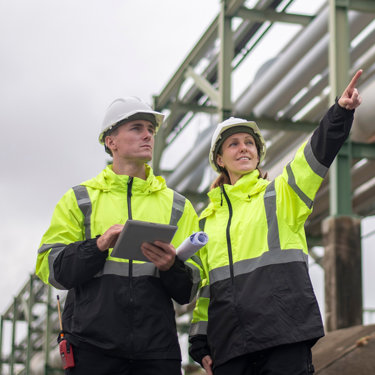Emergency response and remediation in major incident after Llangennech train derailment
Published: 18 August 2023
Project overview
On 26 August 2020, a freight train derailed at Morlais junction, Llangennech.
The train included 25 tank wagons, each carrying up to 85,000 litres of diesel or gas oil. 10 wagons derailed, causing the loss of up to 400,000 litres of diesel and triggering a fire.
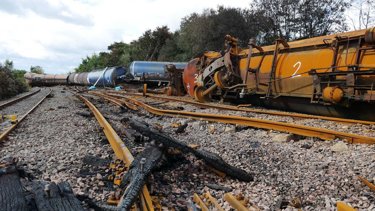
A nearby Site of Special Scientific Interest (SSSI) and cockle beds in the Loughor Estuary made for a highly sensitive environmental setting.
The incident impacted land owned by Network Rail and the Coal Authority. It was a high-profile, 'once-in-a-generation' incident involving multiple stakeholders and the local community.
Our solution
Our overall vision and strategy was published on 30 August 2020, 72 hours after the incident.
The strategy set out the key objectives, activities and reliance's needed to achieve full project closure.
The short-term focused on ‘gaining control’:
- Emergency response and containment
- Establish baseline, start investigation
The mid-term focused on ‘removing oil’:
- Ongoing containment and environmental risk assessment
- Remediation strategy and commencement
The long-term focused on ‘confirming success’:
- Habitat restoration and remediation monitoring
- Verification and final closure
Emergency response
Immediately we set up an incident command and initiated containment and removal of oil from the environment including use of:
- Absorbents
- Booms
- Pipe dams
- Skimmers
- Temporary weir in Afon Morlais
- Flood barrier
- Bubble barrier
- Temporary liquid waste storage
The placement and use of these resources was continually optimized throughout the response works, for maximum environmental benefit.
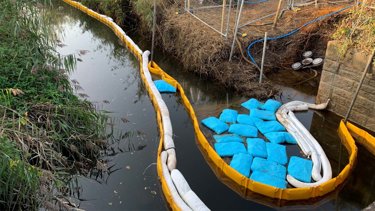
Gaining control
The next priorities were:
- Continue to contain and remove oil from the environment
- Uplift fuel still within wagons (406,000 litres)
- Commence surface water quality observations and testing at up to 20 consistent locations around the site and the estuary
- Commence SCAT surveys (Shoreline Clean-up Assessment Technique)
- Commence ecology and habitat baseline surveys, including on the cockle beds
- Shoreline coastal rib survey
- Drone surveys
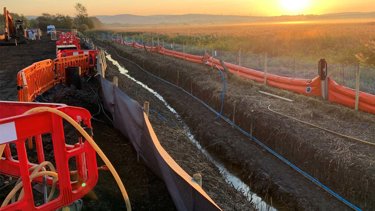
Investigation and monitoring
The key objective was to yield robust data to delineate the location of the oil plume and to inform remediation.
Ground investigation locations included 42 rotary boreholes and 20 supplementary hand augers.
Additional geohazard investigation was done, including deep drilling and resistivity surveying.
We established twice weekly ground water monitoring.
The overall sampling and testing included:
- c. 500 soils & sediments
- c. 5,000 waters
Ecological surveys continued, along with a daily watching brief by ecology clerk of works.
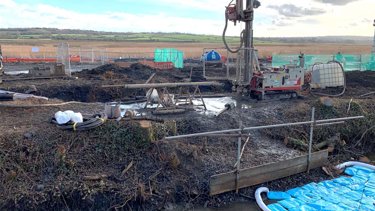
Medium-term remediation
Soil excavation was necessary to allow the rapid reconstruction of the rail line so 30,000 tonnes of contaminated soil were removed and replaced.
Stone for the engineered backfill was sourced from quarries in Carmarthenshire and Pembrokeshire and the topsoil was locally sourced.
All materials were sampled and tested in advance and again after placement, to meet the chemical and physical requirements of the site (>1,300 samples).
The habitat restoration plan started by the planting of over 500 trees and thousands of wetland plants.
Interceptors were also constructed in two drainage ditches to provide long-term containment (environmental permit needed).
Waste removal
To manage the soil waste, we coordinated hazardous waste processes and haulage operations as well as constructing temporary waste storage facilities and haulage routes.
Soil wastes were sent to a licensed treatment facility, instead of disposal.
By the end of earthworks, all the liquid and oily waste generated form the ongoing containment had also been removed:
- 2,664,250 litres of oil & oily water
- 6,595 bags of used absorbents
We maintained full traceability records to meet our duty of care.
Outcome and results
The rail land was handed back to Network Rail by 10 January 2021 (19 weeks after the derailment).
Earthworks were completed in the Coal Authority land by 14th February 2021.
Between 215,000 and 250,000 litres of diesel was removed, achieving almost negligible evidence of residual oil impact at the derailment site.
- 100% reduction of liquid oil freely mobile in the ground
- 97% reduction in the average concentration of oil soaked in to soil
There is also negligible evidence of any downstream impact at all.
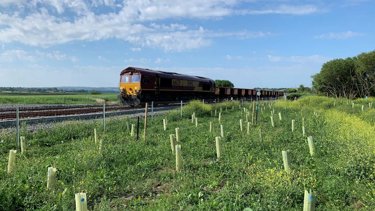
Long-term programme
Monitored natural attenuation (MNA) continues, supported by regular sampling:
- 80 groundwater boreholes
- 20 surface water locations around the site and estuary
Habitat restoration and ecological survey programme continue (monthly/seasonal up to annual intervals):
- Wet woodland at the incident site
- Saltmarsh
- Freshwater fish / estuarine fish
- Birds especially wading birds
- Estuarine invertebrates
- Shellfish (cockles)
Regular update and milestone reports.
“It was really comforting to see how well it was managed, they took control of the site, took control of what the remediation process should be and the people we were dealing with were absolutely fantastic, The site reports are very detailed, all the content we require is there. The expertise has been phenomenal, from the ground support to the ecologists to the people taking the samples, the expertise within the group is really vast which is fantastic.”
Marc Binney, DB Cargo
The Adler and Allan difference
Where we really stand out is our ability to provide the ‘full package’, from beginning to end of an incident.
In the early emergency response phase, we can send tankers and rapid response vehicles within hours, deploying specialist containment equipment from booms and skimmers to pumps.
For containment, investigation, monitoring and remediation, we have entire teams of highly qualified consultants, surveyors, structural engineers, excavators and ecologists – we literally tick every box in terms of services required, and rarely have to bring in external help. We then continue liaising with the client, third-parties, and regulatory bodies well beyond the clean-up operation, to ensure all parties are satisfied with the outcome as well as arranging any longer-term monitoring.
We also have the infrastructure to get our people wherever they are needed, with depots and equipment nationwide, and the flexibility to deploy the right team at a moment’s notice – such as the skilled personnel brought into this situation.
With vast experience, we know that no two spills are the same, but can apply the same efficiency, expertise and knowledge to any incident, minimising risk and damage - and consequently costs – for the client and all parties involved.
More from our Knowledge Hub
 case study
case studyPatented JBAR™ system helps Gatwick Airport mitigate impact of flooding and ensure effective containment
 News
NewsAdler & Allan acquire drainage and civil engineering experts Glanville Environmental
 Insights
InsightsTackling infiltration, misconnections and blockages to unlock hidden hydraulic capacity in wastewater networks
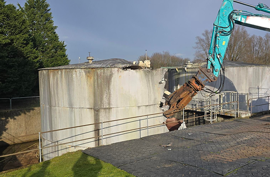 Case study
Case studyDecommissioning and removal of diesel storage tanks and associated pipework
Environmental compliance today, creating a sustainable tomorrow
Helping you reduce risk to the environment and your operation by managing assets compliantly while achieving commercial, ESG, and net-zero goals.
Contact our experts